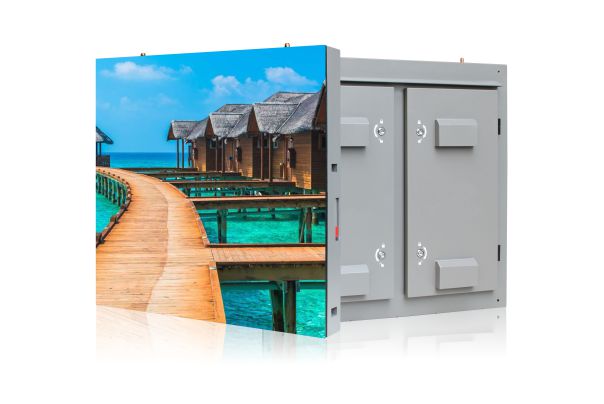Publisher: Supplier of LED Display Time: 2020-09-21 Views: 5982

First, there are three basic ways of heat transfer: heat conduction, convection and radiation.
1. Heat conduction: The heat conduction of gas is the result of the collision of gas molecules when they move irregularly. Heat conduction in metal conductors is mainly accomplished by the movement of free electrons. Thermal conduction in non-conductive solids is achieved through vibrations of the lattice structure. The heat conduction mechanism in liquid mainly depends on the action of elastic wave.
2. Convection: refers to the heat transfer process caused by the relative displacement between the various parts of the fluid. Convection occurs only in fluids, and must be accompanied by thermal conduction. The heat exchange process that occurs when a fluid flows over the surface of an object is called convection heat transfer. Convection caused by different densities of the hot and cold parts of the fluid is called natural convection. If the movement of the fluid is caused by an external force (fan, etc.), it is called forced convection.
3. Radiation: The process by which an object transmits its ability in the form of electromagnetic waves is called thermal radiation. Radiant energy transfers energy in a vacuum, and there is a conversion of energy form, that is, thermal energy is converted into radiant energy and radiant energy is converted into thermal energy.
When choosing a heat dissipation method, the following factors should be considered: heat flux density, volume power density, total power consumption, surface area, volume, working environment conditions (temperature, humidity, air pressure, dust, etc.) of the LED display.
According to the heat transfer mechanism, there are natural cooling, forced air cooling, direct liquid cooling; evaporative cooling; thermoelectric cooling; heat pipe heat transfer and other heat dissipation methods.
Second, the heat dissipation design method of outdoor LED display: the heat exchange area between the heating electronic components and the cold air, and the temperature difference between the heating electronic components and the cold air, directly affect the heat dissipation effect. This involves the design of the air volume entering the LED display box and the design of the air duct. When designing ventilation ducts, try to use straight ducts to transport air, and avoid sharp bends and bends. Sudden expansion or contraction of ventilation ducts should be avoided. The expansion angle should not exceed 20o, and the contraction cone angle should not exceed 60o. Ventilation ducts should be as tight as possible and all lap joints should be in the direction of flow.
Third,When designing the outdoor LED display box, there are several points to pay attention to:
1. The air inlet should be set on the lower side of the box, but not too low to prevent dirt and water from entering the box installed on the ground.
2. The exhaust hole should be set close to the upper side of the box.
3. The air should be circulated from the bottom to the top of the box, and special air intake holes or exhaust holes should be used.
4. Cooling air should flow through the heat-generating electronic components, and at the same time, the short circuit of the air flow should be prevented.
5. Filters should be installed at the air inlet and air outlet to prevent debris from entering the box.
6. The design should make natural convection help forced convection
7. When designing, it is necessary to ensure that the intake port and the exhaust port are far away. Avoid re-use of cooling air.
8. It is necessary to ensure that the direction of the radiator teeth is parallel to the wind direction, and the radiator teeth cannot block the air path.
The fan is installed in the system. Due to structural limitations, the air inlet and outlet are often blocked by various types, and its performance curve will change. According to practical experience, the air inlet and outlet of the fan should preferably have a distance of 40mm from the obstruction, and if there is space limitation, it should be at least 20mm.
The maintenance plan of outdoor LED display, one is to take measures to dissipate heat, and the other is to avoid improper operation in use. It is generally recommended to configure a fan or air conditioner to enhance the cooling function.